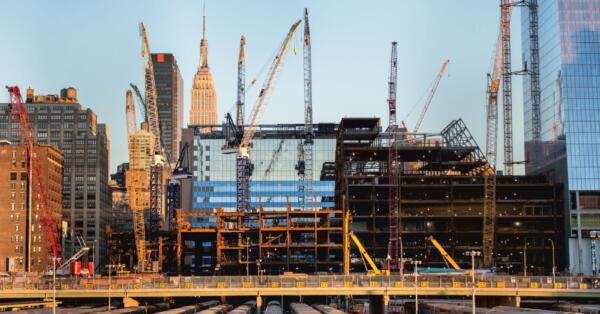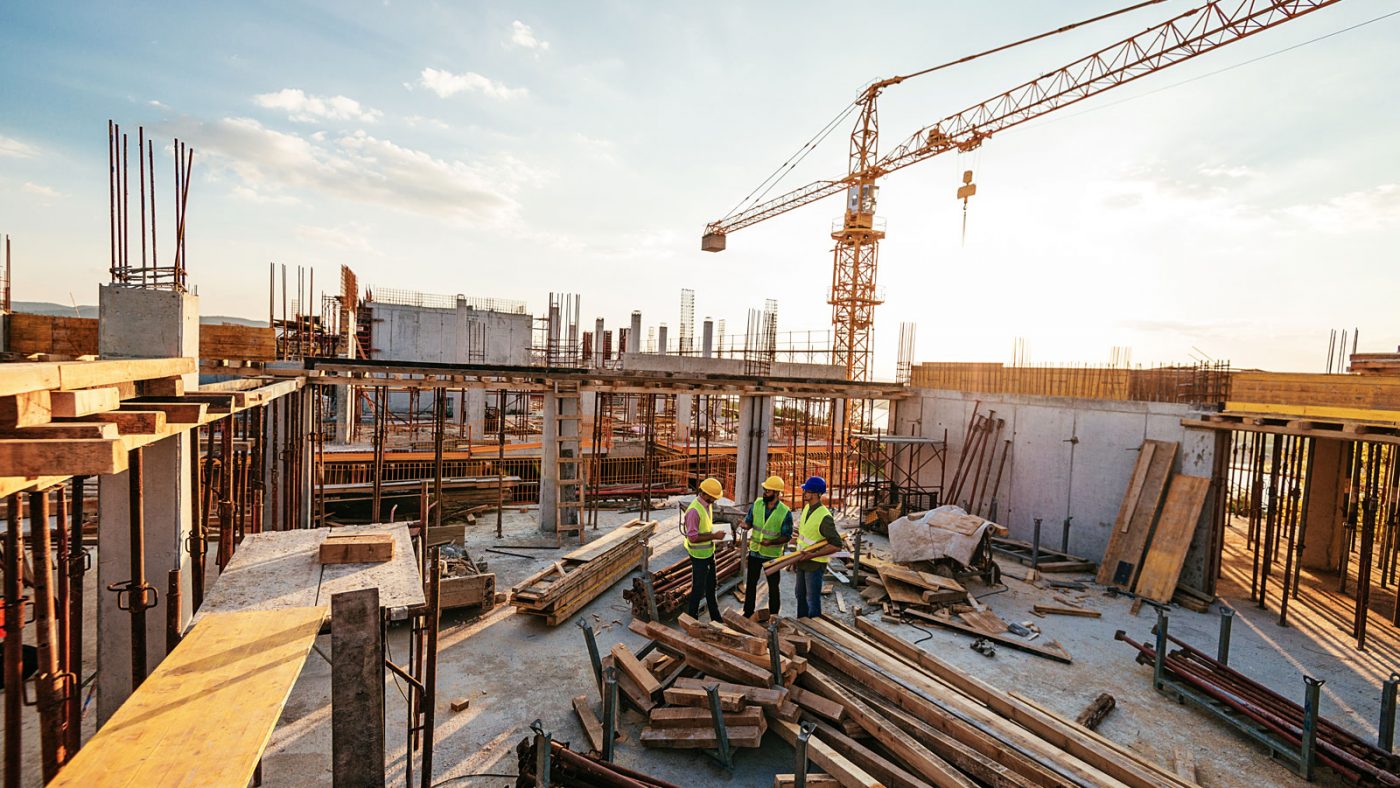Fundamentals of Insurance Risk Products
There is no doubt that the complexity of construction projects has increased in recent years. In “Traditional” building projects, Project Risk is transferred from the Owner/developer to design professionals, which then flows towards the General Contractor. In the current changing landscape, construction risk is increasing. Project delivery methods have changed over the past few years, each with its own inherent levels of risk for the construction project stakeholders with purported savings of both time and money for an Owner. However, these nuances in project delivery and construction contract language can mean increased risk for the contractors involved. For example, the Design-Build or Delegated Design project delivery method has been around for a long time but only in the last 15 years has it been gaining momentum. According to a Design-Build Market Study June 2018 conducted by FMI, approximately half of all construction dollars spent in 2021 will be on Design-Build Projects, which means a greater share of risk for the General Contractor.
One aspect of this complexity is the growing fragmentation of quality control responsibilities. More and more, we see situations where a project owner requires the general contractor to take on additional construction management activities, various design-related activities, and a greater level of responsibility for overall construction quality. Today the risk flow is not so linear, and risk sharing and risk transfer are not uniform. As a result, it is imperative that the Project Owner, Design Professionals, Contractors, and suppliers on all tiers of a project fully understand their contractual obligations and that they are adequately protected against the possible risk of loss on a project.
Assuring that protection is no easy task. Here we look at the different types of risk mitigation products that are available for the General Contractor today, and what you need to know about each within the context of a construction defect claim.
Typical Risk Products Used in the Construction Industry
Construction defects lead to several undesirable outcomes for contractors, sureties, and insurers alike. This reality is in large part the reason behind the requirement for underwritten risk products, although the specific type of product or policy required varies. Six such products include:
1. Commercial General Liability (CGL) Insurance
Typically, all contractors are required to maintain some form of Commercial General Liability (CGL) insurance.
- Contractor CGL insurance is “Third-Party” Coverage on an “Occurrence” basis as opposed to Claims Made basis.
- CGL policies are designed for a contractor’s unique liability coverage needs, and protects against Third Party bodily injuries; property damage; libel, and slander, sometimes called an “accidental advertising injury“; and Completed Operations.
- This coverage protects contractors when their finished work causes a Third Party bodily injury or property damage due to faulty workmanship.
- In almost all instances, CGL does not cover the insured contractor’s work product, property, or equipment.
2. Builders Risk Insurance
Builders Risk Insurance is typically purchased on a project-by-project basis and is considered First Party “Commercial Property Insurance” during the construction phase of a project. This insurance is meant to cover the building’s value based on the percentage of the project completed. As such, the insurance policy increases in value as time goes on. The policy can be purchased and managed by either the Owner or General Contractor and coverage generally stops at project completion.
- The builder’s risk policy is intended to cover the Owner, General Contractor, Subcontractors of all tiers, and Suppliers, with a waiver of subrogation in favor of all stakeholders.
- Typical coverage includes most weather events such as Fire, Wind, Lightning, and Hail as well as theft and vandalism. It also includes coverage for damage caused by motor vehicles at the construction site. Note that earthquake and flood damage is not typically covered on a basic policy and would need to have extended coverage for these types of events added to the policy.
- Builders Risk does not insure subcontractor work performance; Third Party property, tools & equipment; professional liability of the contractor; or bodily injury accidents.
- Additional coverage may be added to a policy with an ensuing loss provision which may cover damage to other property caused by faulty workmanship of the contractor (Similar to CGL coverage).
3. Wrap Insurance
Wrap insurance is typically purchased on a project-by-project basis and is considered “General Liability Insurance” during the construction phase of a project. The liability program typically covers all stakeholders participating in the construction project through one insurance policy.
- The policy can be purchased and managed by either the Owner or General Contractor and coverage generally stops at project completion.
- When the Owner manages the program, it’s called an Owner Controlled Insurance Package (OCIP). When managed by the General Contractor - it’s called Contractor Controlled Insurance Package (CCIP).
- Typical Wrap coverage includes potential bodily injury as a result of construction operations.
- Wrap policies usually combine General Liability with additional Employer Liability and Excess Liability coverages.
- Additional coverages can be added to include Workers Compensation (depending on state insurance regulations); Builders Risk; Pollution Liability; and Owner’s Protective Professional Indemnity (OPPI) which extends coverage to the owner only, for damages arising out of professional liability created by the design team of a project.
4. Contractor Professional Liability, or Errors & Omissions (E&O) Insurance
Contractor Professional Liability, or Errors & Omissions (E&O) Insurance is a relatively new insurance product that is written on a “claims made” basis similar to Design Professionals E&O policies and can be purchased as an add-on to an existing CGL, Excess or Umbrella liability policy.
- Typical policies cover: In-house design staff; Design delegation under provisions of typical AIA General Conditions; Subcontracted design under a Design-Build contract; Agency and At-Risk Construction Management; and Faulty workmanship of subcontractors when there is a construction management contract.
- Additional coverages can be added to include “Pollution Coverage” and “Indemnity Coverage“ for first-party claims by a contractor against its architect/engineer in design-build contracts.
5. Subcontractor Default Insurance (SDI)
Subcontractor Default Insurance (SDI) is relatively new and entered the US Construction Insurance market in the late 1990s. Originally underwritten by Zurich as “SubGuard”.
- Policies can be purchased “per project” or per “policy term“, and usually carry large deductibles. Individual subcontractors and suppliers need to be added on for each written project or policy term for coverage.
- SDI coverage is a two-party contract between an Insurer and a General Contractor and designed to protect general contractors from losses when a subscribed subcontractor or supplier defaults on its obligations.
- Policies cover direct and indirect costs of a subcontractor in default such as liquidated damages, acceleration costs, and extended overhead.
- SDI does NOT provide a guarantee of performance, rather the Insurer indemnifies the GC for costs associated with a subcontractor’s default.
- A GC with a successful SDI program needs the ability to screen out unqualified subcontractors to maintain favorable premium rates.
6. Contract Surety Bonds
Contract Surety Bonds, such as Bid Bonds, Performance Bonds, Payment Bonds, and Warranty Bonds are not insurance. Bonds are three-party agreements between a Principal, an Obligee, and a Surety. The basic premise of a bond obliges the Surety to guarantee, for the benefit of the Obligee, the contractual obligations of the Principal if the Principal fails to do so.
- The Fidelity Insurance Company of New York brought the idea of suretyship from the Guarantee Society of London to the United States in 1865. By 1884, the first successful U.S. company had emerged that was committed to underwriting Surety Bonds. American Surety Company, Inc. in New York paved the way for underwriting companies and drew even more attention to the rising surety industry growing in the U.S.
- Bonds are written on a project-specific basis.
- Bonds most often include a General Indemnity Agreement between Surety and Principal, with equitable subrogation rights in favor of the Surety.
When a Construction Defect Claim Arises
The Builders Risk policy should be the first line of insurance used on a construction defect occurrence if the project has not yet been completed. In these policies, the waiver of subrogation in the project contract precludes the Builders Risk insurer from subrogating against or seeking reimbursement from the responsible contractor. But that is not true for the designer, as design professionals are not typically covered under the Builders Risk policy. Builders Risk policies typically exclude design deficiencies, and a determination needs to be made whether damages for defective work are design-related or construction-related. Coverage may be available for ensuing loss or damage arising from a design defect.
Commercial General Liability (CGL) policies can have a dramatic effect based on where the project, or loss, is located. Some states consider an encountered defect as an “occurrence,” or “property damage,” that was unexpected or unintentional, which triggers coverage under a CGL policy. Some states such as Pennsylvania, view defects as foreseeable and therefore not an “occurrence” to trigger coverage under a CGL policy.
The Construction Industry view is that the purpose of CGL policies is to protect builders from risks associated with owners bringing post-construction claims for damage to buildings or other property caused by alleged construction defects.
Key Questions to ask during the claims process with a standard CGL policy:
Was there an “Occurrence”?
Usually defined as “an accident, including continuous or repeated exposure to substantially the same general, harmful conditions.
Was there “Property Damage”?
Usually defined as (a) physical injury to tangible property, including all resulting use of that property, as well as (b) loss of use of tangible property that is not physically injured.
What are the policy “Exclusions”?
A standard CGL policy contains 17 lengthy exclusions. Most notable is the “business risk” exclusions which include the damage to your property, damage to your product, and damage to your work exclusions.
Key Provisions of a CGL policy under a construction defect claim include:
Duty to Defend
In most states, CGL provisions call for the insurance company to defend a Contractor in a lawsuit, but it is the insured’s burden to prove coverage for the alleged claims. The duty to defend exists if the events alleged in the pleadings are covered under the terms of the policy, regardless of whether the insured is ultimately found liable, and any doubt as to coverage is to be resolved in favor of the insured.
Duty to Pay or Indemnify
Even if an insurance company is obligated to defend an insured Contractor in a lawsuit, that does not necessarily mean that it is obligated to pay the damages claimed by a plaintiff. Whether the insurance company is obligated to pay damages under a CGL policy solely depends on policy provisions and whether an occurrence event occurred and if there was coverage for resultant property damage.
Contractor Professional Liability/E&O Policies
Contractor Professional Liability/E&O policies are considered nonstandard, meaning each insurer has its own format and provisions; and are written on a claims-made basis. A contractors’ E&O policy is not meant to duplicate what the CGL policy covers; it specifically excludes liability for bodily injury, property damage, and personal and advertising injury. It also doesn’t cover any property damage liability not excluded by the CGL policy. What is covered, depending on the specific contractors’ E&O policy, is property damage to the named insured’s work, the insured’s product, and impaired property. This product is considered to cover the limitations within a contractor’s CGL policy.
Subcontractor Default Insurance
The construction defect claims process under Subcontractor Default Insurance (SDI) is very different from traditional Surety Bond claims. SDI policies allow the General Contractor to declare the subcontractor in default and then simply proceed with remedying the default after providing backup documentation of the default to the insurer. The General Contractor recovers the costs of remedying the default from the insurer, and the insurer pursues a subrogation action against the defaulted subcontractor.
Surety Performance Bonds
One strain of complexity arises in instances where a defect is not evident until after the project is completed and a Surety Performance Bond is in place. Unfortunately, Performance Bonds are often improperly viewed as insurance obligations similar to Builders Risk and CGL policies, both of which can impose liability on the Surety and Principal long after the bonded work has been fully completed and accepted.
The issue with pursuing compensation for a defect claim using Performance Bonds lies in the fact that these vehicles are “defeasance” bonds, meaning the bond obligation is intended to be null and void if the contractor’s performance conforms to the terms and conditions of the contract. So, in theory, once a project is at the completion stage, and all contractual work is complete, accepted, and paid for by the owner, the obligation under the Performance Bond would be completed as well.
In practice, however, the duration of Performance Bonds is typically governed by the statute of limitations (the duration of which often presents a jury trial issue) and the expiration of the statute of repose. As a result, the Surety, the bonded contractor, and the contractor’s owners and their indemnitors can remain subject to potential long-term liability under a Performance Bond for construction defect claims that may not be filed until many years after the contractor’s work was fully completed and accepted.
In an instance like this, where the work has been completed, but a claim has been put forth under the requirements defined in a performance bond, there is an alternative path. If the Surety must pay an obligation of the Principal for defective work, one defense often taken is to use equitable subrogation rights against the Principal’s CGL carrier.
How Can VERTEX Help?
Certainly, the challenges of knowing when and how to protect against the risks of construction defects will only increase as the complexity of projects and contracts grow. VERTEX maintains a national and international presence of Construction Claim engineers, architects, scientists, and consultants with design and construction expertise that covers all specializations of building and infrastructure related construction systems.
To learn more about VERTEX’s Construction Claims and Surety Claims Consulting services, please contact Mark Stein or submit an inquiry.





